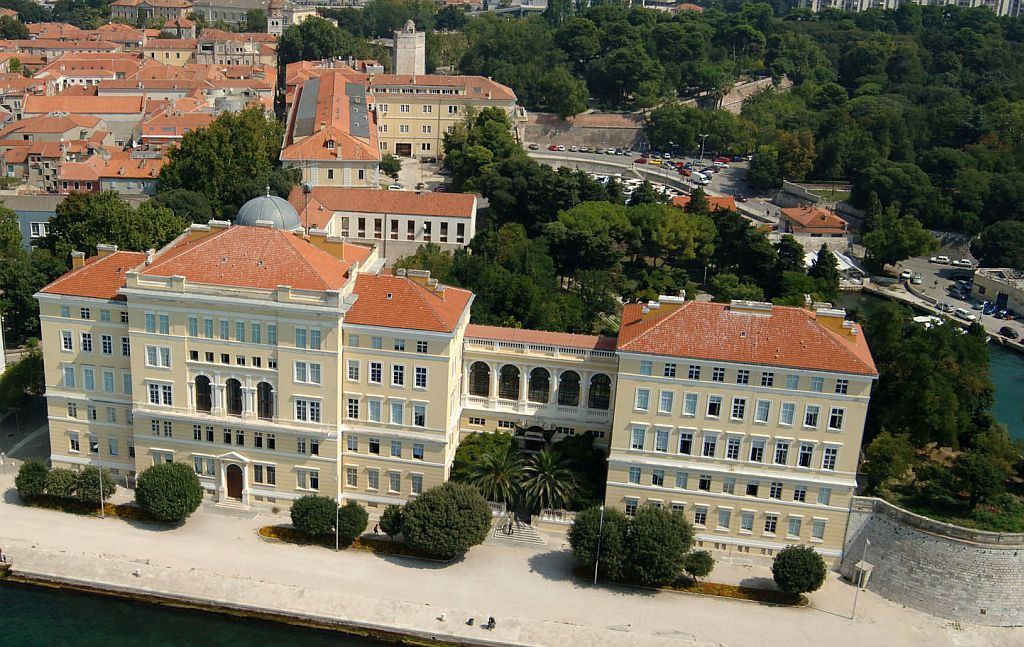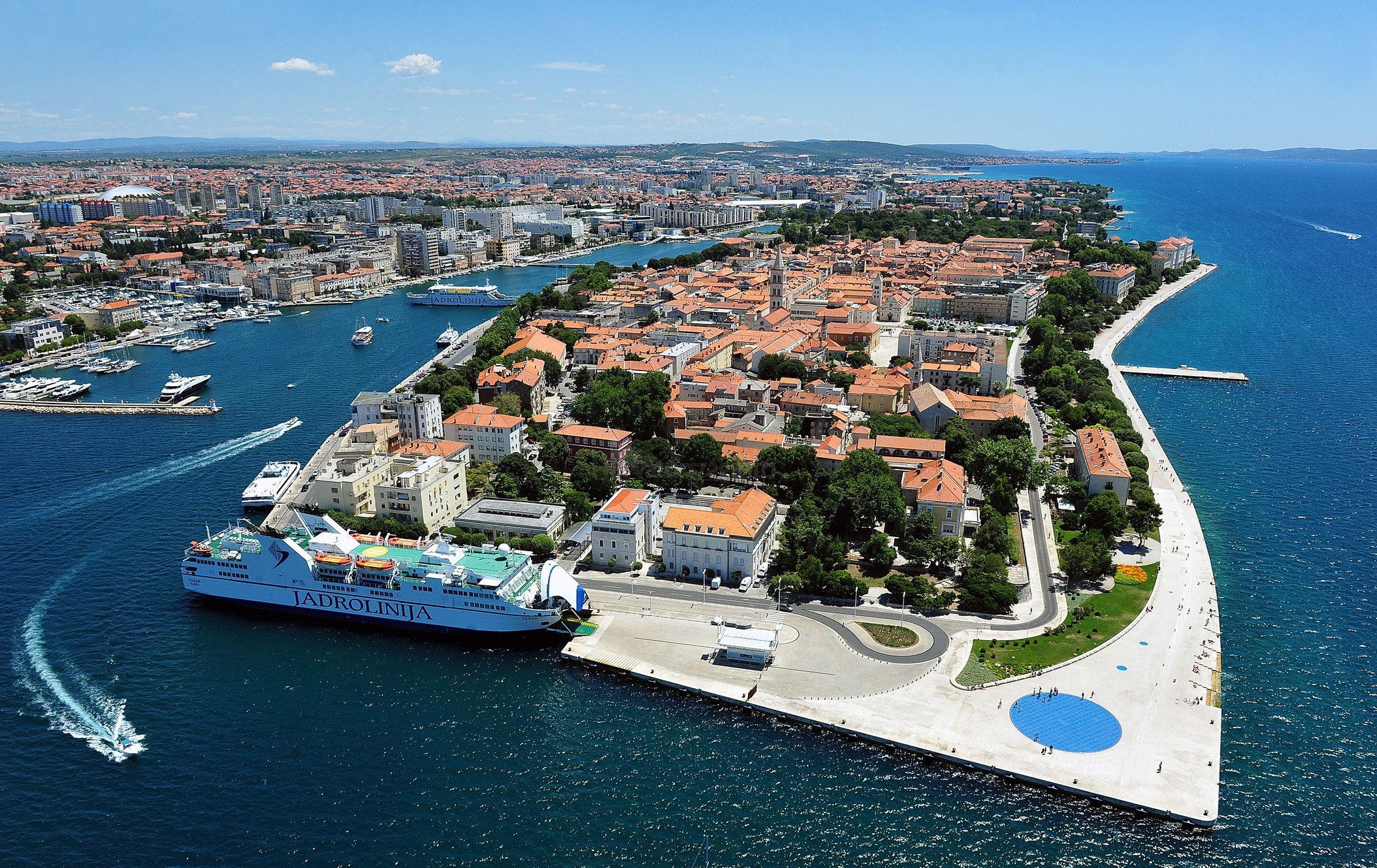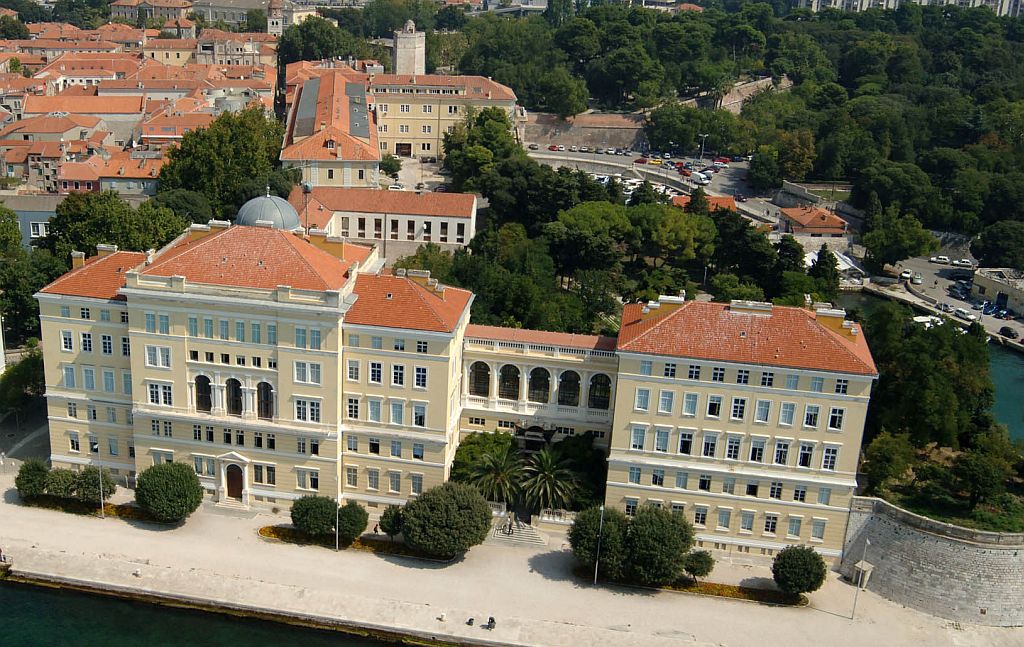
University of Zadar
In 1396 the Dominican general institution of higher education, called UNIVERSITAS IADERTINA, was founded in Zadar, it was the first institution of higher education in Croatia. In 1956, on that basis, the Faculty of Arts in Zadar was founded, the first Croatian higher education institution established outside Zagreb, the capital city. In July 2002 the Law of Instituting the University of Zadar was passed by Croatian National Parliament and the University of Zadar was registered on January 29, 2003. The University of Zadar is an entirely integrated university, consisting of 25 departments, mainly of humanities and social studies, originated from the former Faculty of Arts, but several new departments of technical, bio-technical and medical sciences were also founded. Currently, 5762 students are studying at the University of Zadar and there are 586 employees (412 academic and 174 administrative staff). The University of Zadar was awarded the Erasmus University Charter in December 2009 as well as Erasmus Charter for Higher Education 2014-2020. There are 77 bilateral cooperation agreements signed so far between the University of Zadar and partner universities (306 Erasmus+ inter-institutional agreements with 198 institutions). Besides the Erasmus+ programme both students` and teachers` mobility are implemented also through other programmes of exchange like CEEPUS, Fulbright, inter-institutional bilateral agreements and scholarships from the Ministry of Science, Education and Sports.

UniAdrion
UniAdrion is a "Network of Universities" established with the purpose to create a permanent connection among Universities and Research centres from the Adriatic-Ionian Region. The university network was born within the framework of the Adriatic-Ionian Initiative, as established on the occasion of the International Conference entitled "Culture as a Bridge - The Interuniversity Cooperation in the Adriatic-Ionian Basin" held on 15th -16th December 2000 in Ravenna, Italy. UniAdrion promotes cooperation among Universities and Research Centres mainly through the realization of didactic initiatives, such as training courses, masters, research projects. Their didactic structure is characterized by a blended approach, it means alternation between face to face (seminars, summer school, a period of frontal lessons) and on-line modules through a Web learning environment.

Zadar
Zadar is home to 71,471 inhabitants, it is the capital of the Zadar County and strong maritime, tourist, harbour and industrial city on the Middle Adriatic. The old part of the City, located on a small peninsula, is an important historical town, rich with world renowned heritage visible at every step. In Roman documents the old Liburnian centre Zadar is mentioned for the first time as Jader (Jadera) when after 59 BC it became a Roman municipium and shortly afterwards a colony of Roman citizens. After the fall of the Western Roman Empire, Zadar became the capital of the Byzantine province of Dalmatia. During the 10th and especially the 11th century the city was governed by the Croats. In the Middle Ages the city maintained its autonomy although it frequently came into conflict with Venice. In the year 1409, Ladislaus of Naples sold the city of Zadar to Venice because of “his rights” over Dalmatia. After the fall of Venice, Zadar came under Austrian rule as the capital city of Dalmatia. According the Treaty of Rapallo Zadar was given to Italy (1920) but after the Second World War it was returned to its mother country Croatia. Founded on a 3,000 years old tradition, the Zadar region has developed to the extent that today covers 14% of the total land surface of the Republic of Croatia and around 12% of the territorial waters, with more than 300 smaller and larger islands, better known under the name of Zadar archipelago. The region offers beaches with crystal clean water and other natural beauties such as nature parks Telašćica at the Island of Dugi Otok, Lake Vrana and Mount Velebit, as well as national parks Kornati Islands, Paklenica and Krka waterfalls.

